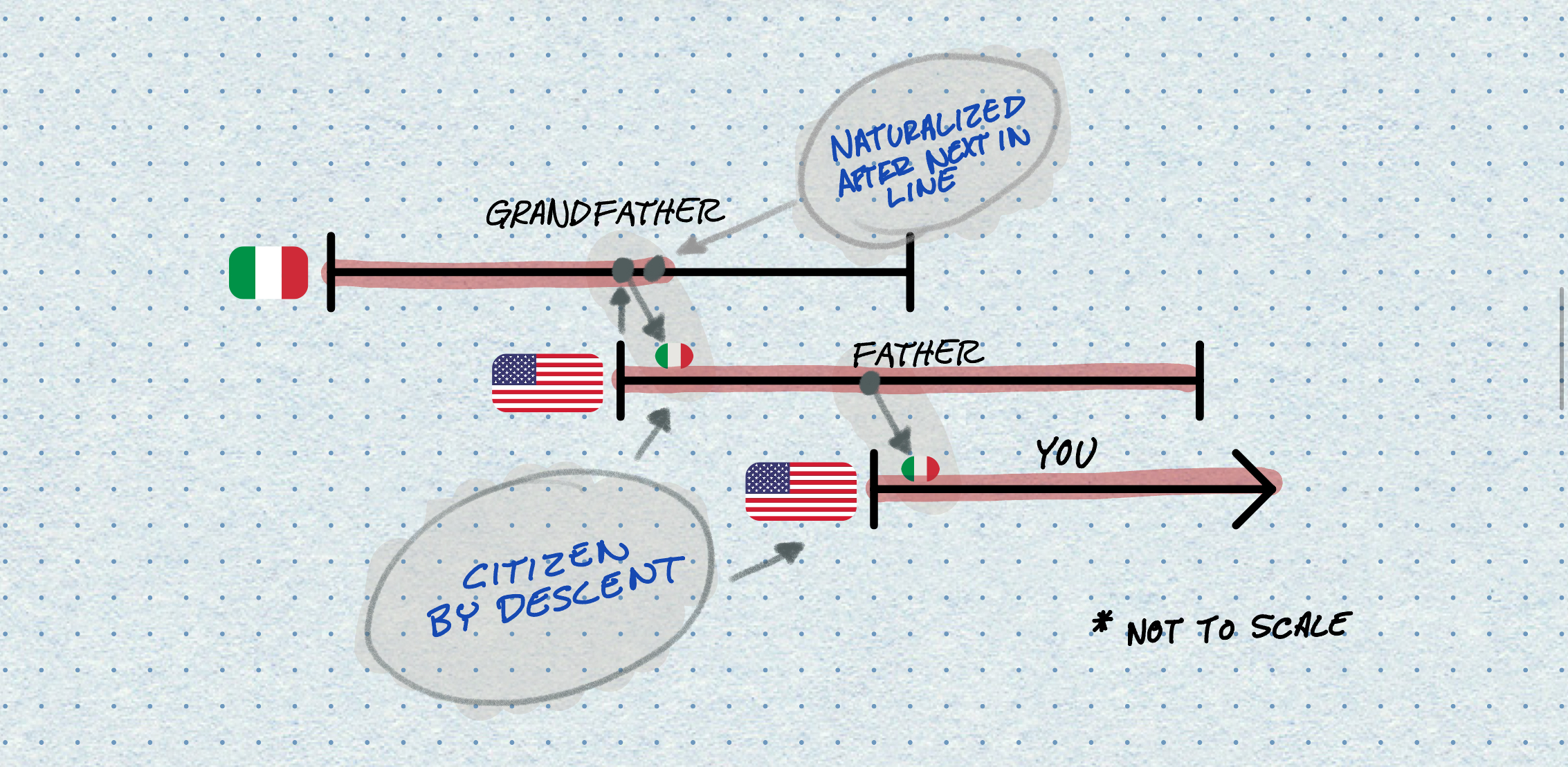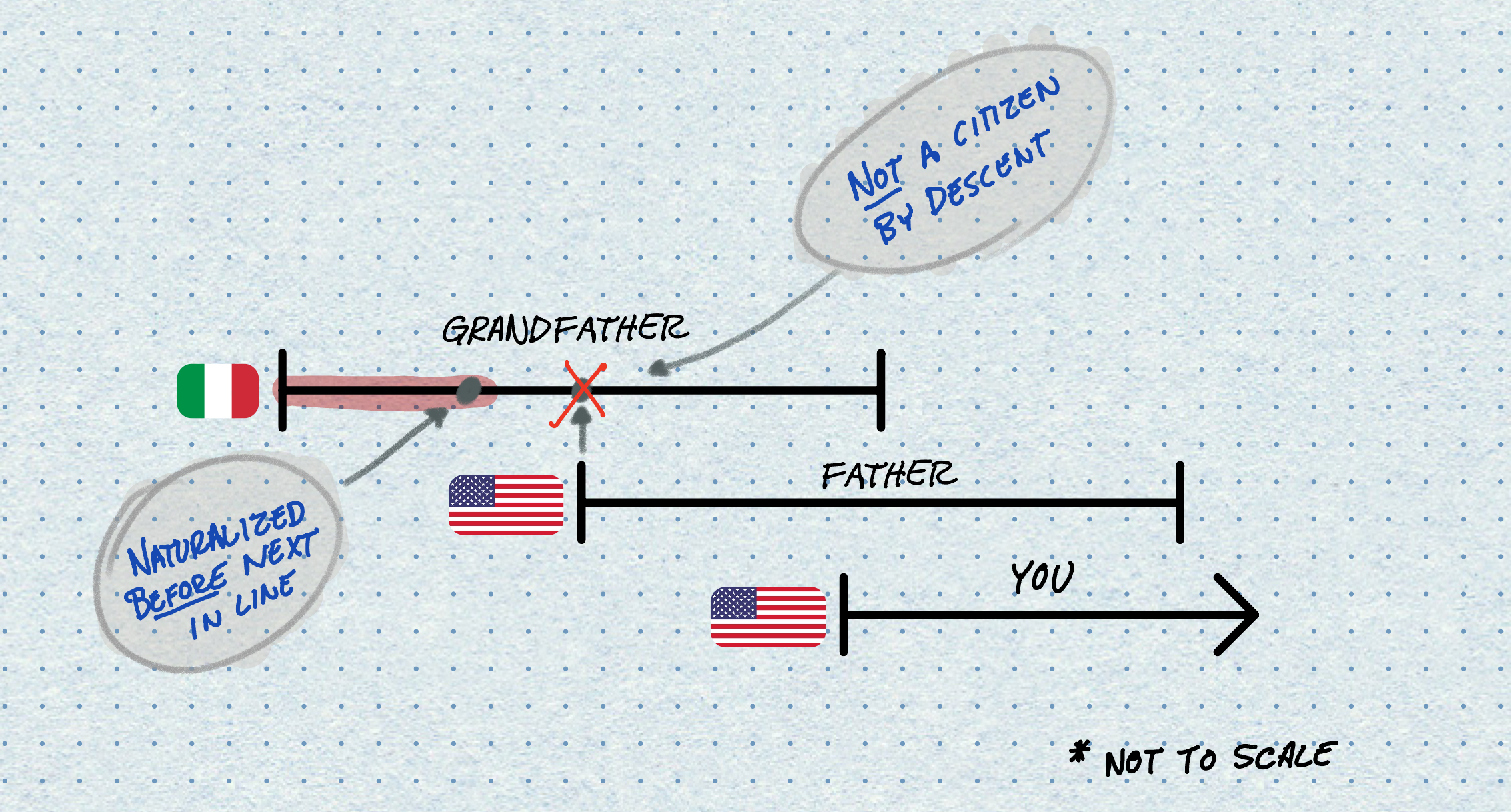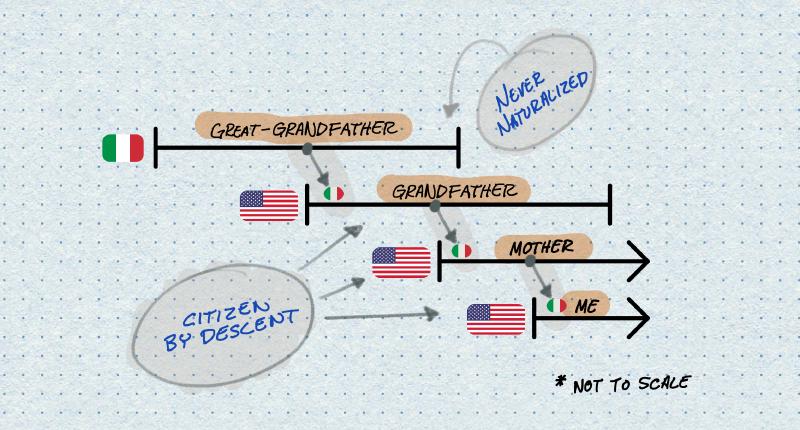I have Italian ancestry but never really experienced an Italian-American childhood. Growing up in a smaller town in Ohio, I didn’t really learn about the culture or history. While I knew my Mom’s family was Italian—my interest in Italy oddly came from other parts of my family. For example, my love for pasta came from a restaurant in Columbus that my non-Italian family frequented. It wasn’t until I was an adult that I really started thinking about Italy or it’s history.
Cut to early 2023 when I learned: I may be an Italian citizen. What? Let me introduce you to the wild world of Italian citizenship laws and ‘jure sanguinis’.
What is jure sanguinis?
At a high level, this is simply citizenship by descent. Italy’s laws allow for recognition of the descendents of Italian citizens—given some rules. Those rules can get really complicated—and I don’t want to try to cover every possible path someone could take. In some cases the years your ancestor lived in can affect this, in other cases their gender, unfortunately, affects it. There are many resources to figure out your path that I’ll talk about later.
Roughly speaking, there are two important things to know to get started.
- When your Italian-citizen ancestor naturalized in the US?
- When was the next in line born?
For example, let’s use a pretty simple example. Let’s say your Grandfather was born in Italy in 1900, moved to the US in 1920, and naturalized in 1925.
If his child—your parent—was born in 1924 (one year before naturalization) you may have a valid line.

But if this child was born after that naturalization event, the line is broken.

This is of course very oversimplified, there are dates that matter and like I said above—gender of your ancestor can matter. For example, before 1948 women could not pass on their citizenship. That was changed in 1948 but if your ancester was born before then, you’d have to actually go through a court-based approach effectively suing to be recognized based on the 1948 ruling.
What if your ancestor never naturalized? Easy, as long as you can prove it. Oddly disproving something is a bit harder than proving it. For example, to prove that example ancestor above, you’d need their certificate of naturalization or oath of allegiance—which can be obtained from the government. Disproving requires letters from the government, the national archives, and local county courts all stating they have no record of naturalization—and more. It gets complicated.
Given all that, you collect the proof for your recognition and take it to your region’s Italian consulate.
So… how do I prove all this?
That’s the right question. Get ready because this is where the fun begins.
You prove this by obtaining all the vital records, marriage & divorce, and naturalization records for your entire line. From your Italian-citizen ancestor through to you. Then you have to have any non-naturalization document both “apostilled” by the state it came from and translated to Italian. This is of course hard to reason about without an example, so let me talk through the documents I need for my case.
This can vary greatly between consulates. Since I’m in NC I base this on the Philadelphia consulate’s checklist. Also, I’ll be using mildly fake information in this example and won’t be sharing my ancestor’s names, of course, for privacy!
Andiamo!
First, I need documents for my last Italian-citizen ancestor, my great grandfather. He was born in Sicily in 1890, moved to the US in 1920, married in 1925, and never finished naturalization—starting the process multiple times. He died in 1960.
Documents I need to collect for him
- Vital Records
- His Birth Certificate from Italy
- Marriage Certificate from Ohio—Apostilled & Translated
- His wife’s Birth Certificate from Ohio—Apostilled & Translated
- His wife’s Death Certificate from Ohio—Apostilled & Translated
- His Death Certificate from Ohio—Apostilled & Translated
- Proving he never naturalized
- Certified Census Records from before and after his next in line, my grandfather’s birth that show him as either “AL” (Alien) or “PA” (First Papers).
- Certificate of Non-Existence letter from the USCIS (immigration service)
- Negative Search Letter from the National Archives
- Negative Search Letter from the county in Ohio he lived.
- Since he lived in the US during the 1940s as an Italian citizen, he also had an Alien Case File. So that too.
Now repeat those vital records for each person in my family line: my Grandfather, my Mother, and myself. And guess what, there were some divorces in there so I need certified, apostilled, and translated versions of those too as well as written confirmations from the courts that there are no open appeals to the divorce.
It’s a lot and I occasionally learn of new problems—like my mother changed her name at one point. Now I have to prove that she is the same person.
Currently my google sheet checklist has around 30 individual documents I need, most of which need apostilled and translated. Maybe some time in the future I’ll share my google sheet.
Finally after you go through the process of collecting, apostilling, and translating all these documents—you have to get an appointment at the consulate for your region. This is a task many compare to winning the lottery.
OMG Josh, why?
You are probably seeing the amount of documentation here and wondering—why would you do this to yourself? Don’t you have a video game or something you could play instead?
Well, yeah it’s a lot. I wouldn’t recommend it unless you really wanted to go for it—and even then maybe rely on one of the many services that can help you. I’ve done this DIY because I enjoy genealogy and learning about my family. Finding these stories that I never learned as a kit have been such a great experience.
And where does this go? What does Italian citizenship get me? It’s a connection to my family that I never knew. It allows me to travel in the EU more permenantly, and when the time is right it’ll allow me to move to Italy more permanently. I’ve always had a dream of living in Europe and well this is a great way to make it happen.
Ok, I’d like to do it but how do I learn more?
Well there are a lot of resources out there. Both for DIY people like me and services that can help you. You can find lots of information and ask questions. If you are going through this and want to talk to someone about it because everyone you know is bored of hearing about it—yeah, same here—I’d be glad to talk more about this! Feel free to reach out on Threads or Mastodon.
In the mean time, here are some resources to learn more about this:
